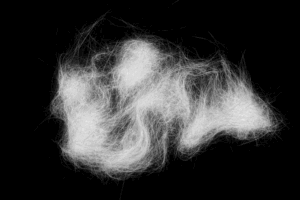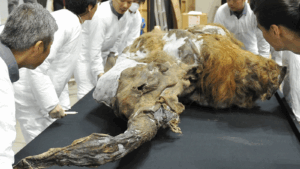A secret group of billionaires, scientists and their plan to stop COVID-19.
In March of 2020, a secret group of billionaires, Nobel Prize laureates, and scientists came together to form what is being referred to as a new Manhattan Project to stop COVID-19. The name, of course, references the similarly cutting-edge group of scientists who gathered to develop nuclear technology during World War II.
The group, Scientists to Stop COVID-19, was founded by Tom Cahill, a former venture capitalist, and current research scientist; it includes 12 scientists, all of whom are leaders in their respective fields, such as Nobel Laureate Dr. Michael Rosbach Ph.D, chemical biologist Dr. Benjamin Cravatt, Ph.D, and immunobiologist Dr. Akiko Iwasaki, Ph.D. With the help of Mr. Cahill’s billionaire contacts, Peter Thiel, Jim Palotta, and Michael Milken, the group connected with Nick Ayers, aide to former vice president Mike Pence. Scientists to Stop COVID-19 created a 17-page report with the help of numerous scientists, businesspeople and government officials, and delivered it to the president’s cabinet and the White House Task Force. The FDA quickly agreed to some of their proposals, such as eliminating some regulations for COVID-19 drugs to allow faster production and distribution.
Scientists to Stop COVID-19 outlined their four step plan to control and stop the spread of the novel coronavirus in March. The first step included using earlier research into other RNA viruses like Ebola and HIV, and repurposing Remdesivir, a drug that scientists unsuccessfully attempted to treat Ebola with. Although in March 2020, when 20 Remdesivir trials for COVID-19 were going on worldwide, the scientists proposed more widespread trials to determine the effectiveness of the drug on COVID-19 patients, especially since it was found to be safe in humans in a 2019 Ebola trial. Remdesivir was approved by the FDA for treatment in COVID-19 patients in October 2020, just eight months after it was initially suggested by this team of scientists.
While the first proposed step was only meant to serve as an immediate and short term response, the scientists intended the second one to have longer-term effects and include preventative measures such as antibody therapies and short-term vaccines. They identified Regeneron Pharmaceuticals and Vir Biotechnology, both leaders in antibody research experienced with pushing out Ebola drugs quickly, as major companies that could assist with creating new antibody therapies. Scientists to Stop COVID-19 proposed complete collaboration between the FDA, these aforementioned biotechnology companies, and other companies that could help with the manufacturing and distributing process. Such a collaboration would have allowed drugs to be submitted to the FDA as early as April 2020 and administered to high-risk patients as early as August 2020.
Unfortunately, everything was delayed. Regeneron’s antibody treatment was not approved until November of 2020, and was not used until December. Despite the delay, the initial results from Regeneron’s antibody treatment were promising for hospitalized patients who had not yet developed their own antibodies against the virus. Meanwhile, Vir Biotechnology’s antibody treatment is still in clinical trials and cannot be used yet. The scientists hoped that administering antibody treatments in the fall could help prevent a second wave of COVID-19 over the winter, but delays meant that a second wave was inevitable.
The third step of the plan involved a long-term vaccine which would be ready in March of 2021. In reality, the first COVID-19 vaccine was administered in December of 2020 in the U.S. Much of what was outlined in this section has in fact come to fruition, including cooperation between the FDA and biotechnology companies, such as Moderna and Pfizer, to produce a safety and efficacy. A potential issue they outlined, which presents problems now, is that the U.S. does not have a centralized and organized system for vaccine distribution. Right now, some doses of the vaccine are being thrown out because doses are not kept at the right temperature and organizations have trouble deciding who should get the vaccine first.
The proposal’s fourth section outlined how to safely reopen schools and businesses and keep society running while minimizing COVID risk. This final step included cataloguing symptoms, wearing masks, testing frequently and contact tracing.
Scientists to Stop COVID-19’s plan was proposed almost a year ago, and seeing which of its suggestions were ultimately implemented is striking. Drugs like Remdesivir mentioned in the first stage were tested and used on COVID-19 positive patients, and the vaccine is actually in distribution months before these scientists expected. Unfortunately, antibody drugs lagged far behind the scientists’ plan and the U.S. was unable to prevent a second wave of COVID-19 this fall and winter. This plan and other countries’ successful responses to the pandemic have proved that efficiency, teamwork and cooperation are of utmost importance in fighting this deadly virus.
– Mattie Hung
Image Sources







Comments are closed.